On Thursday, September 8th, Place Lab hosted the second Session of our year-long Ethical Redevelopment Salon. In this entry, Place Lab Operations + Administrative Manager, Naomi Miller, reports on the Session.
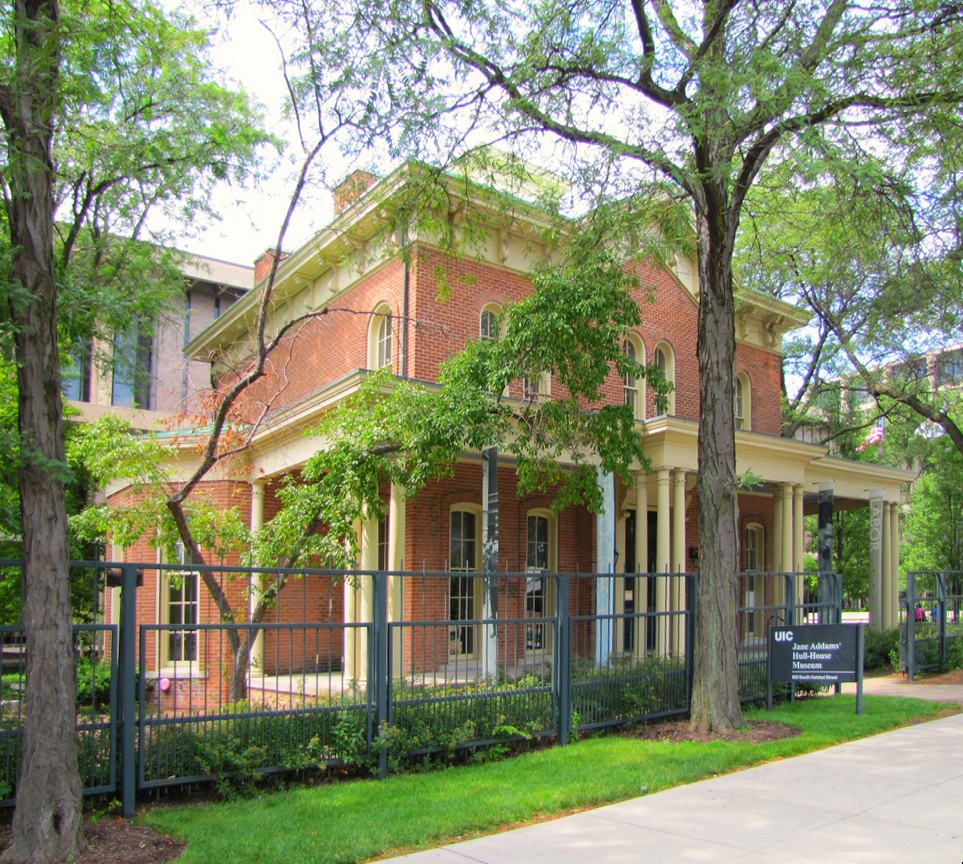

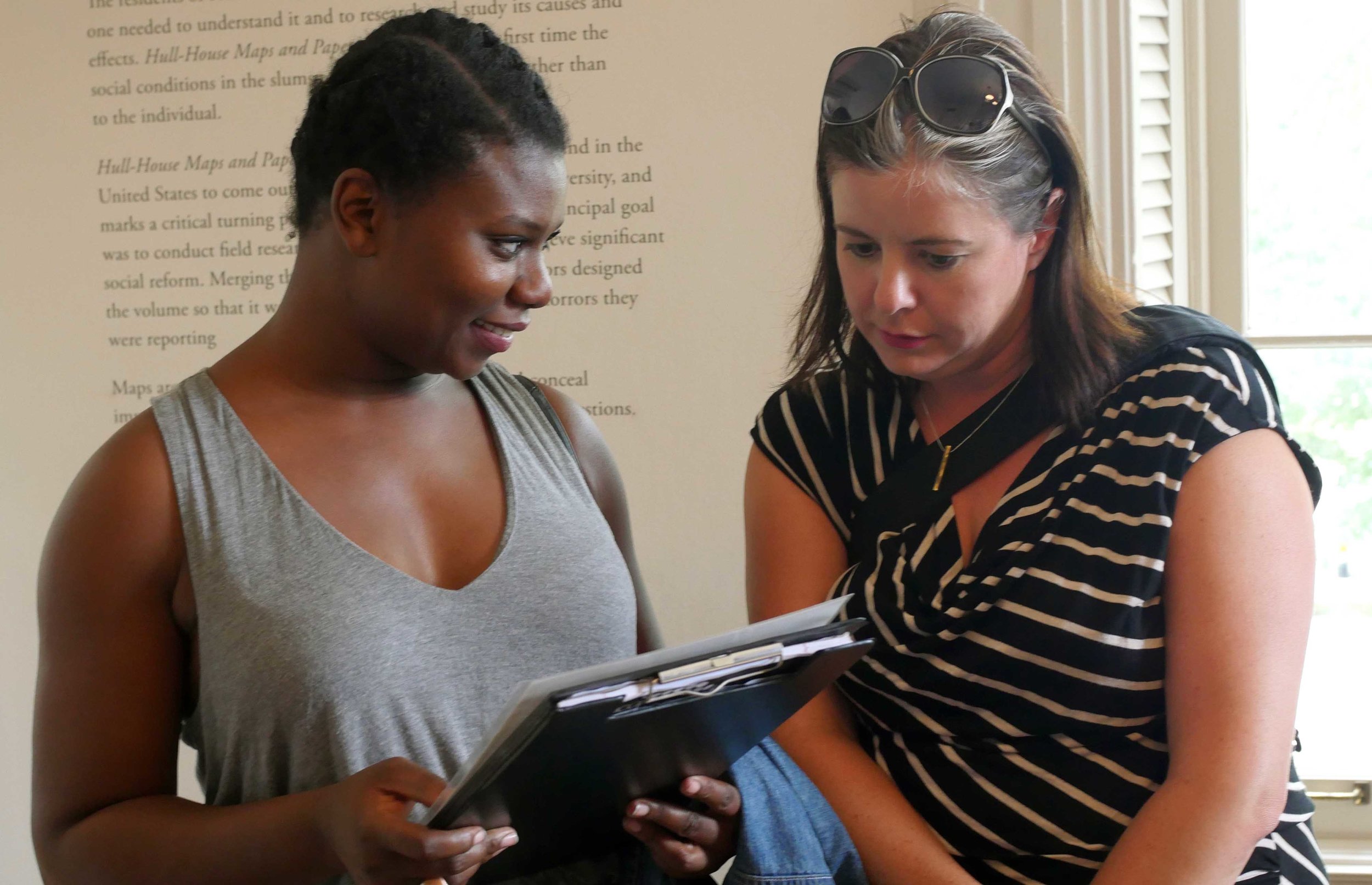

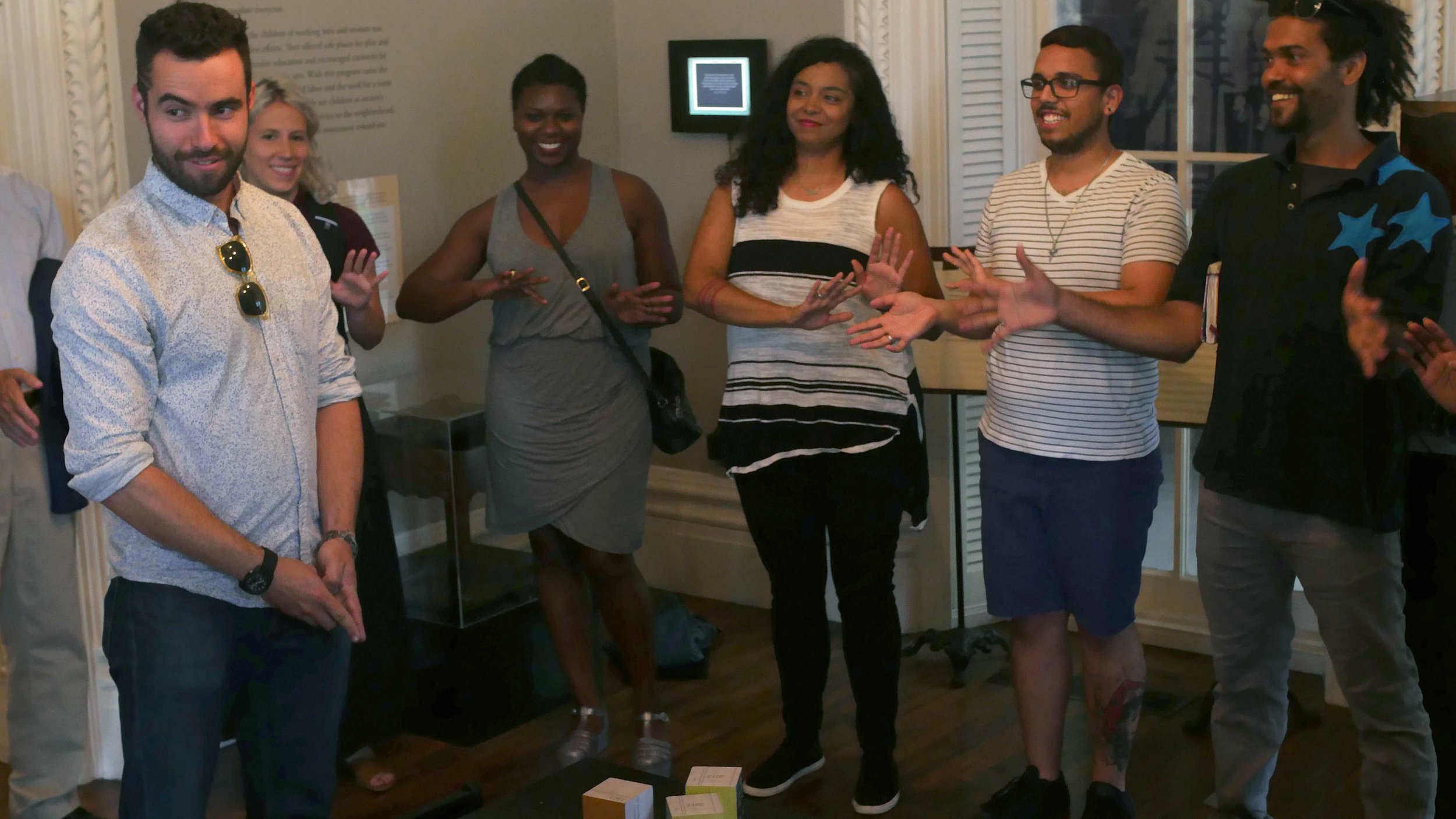

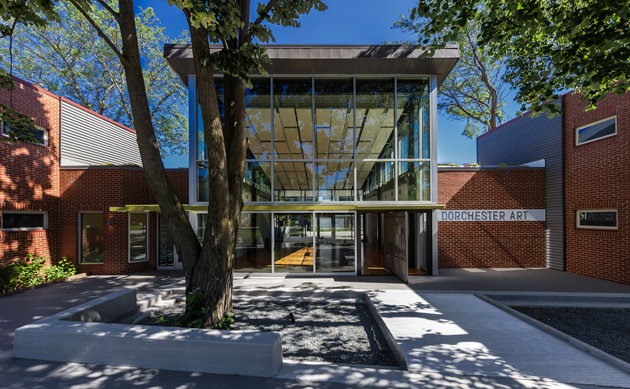
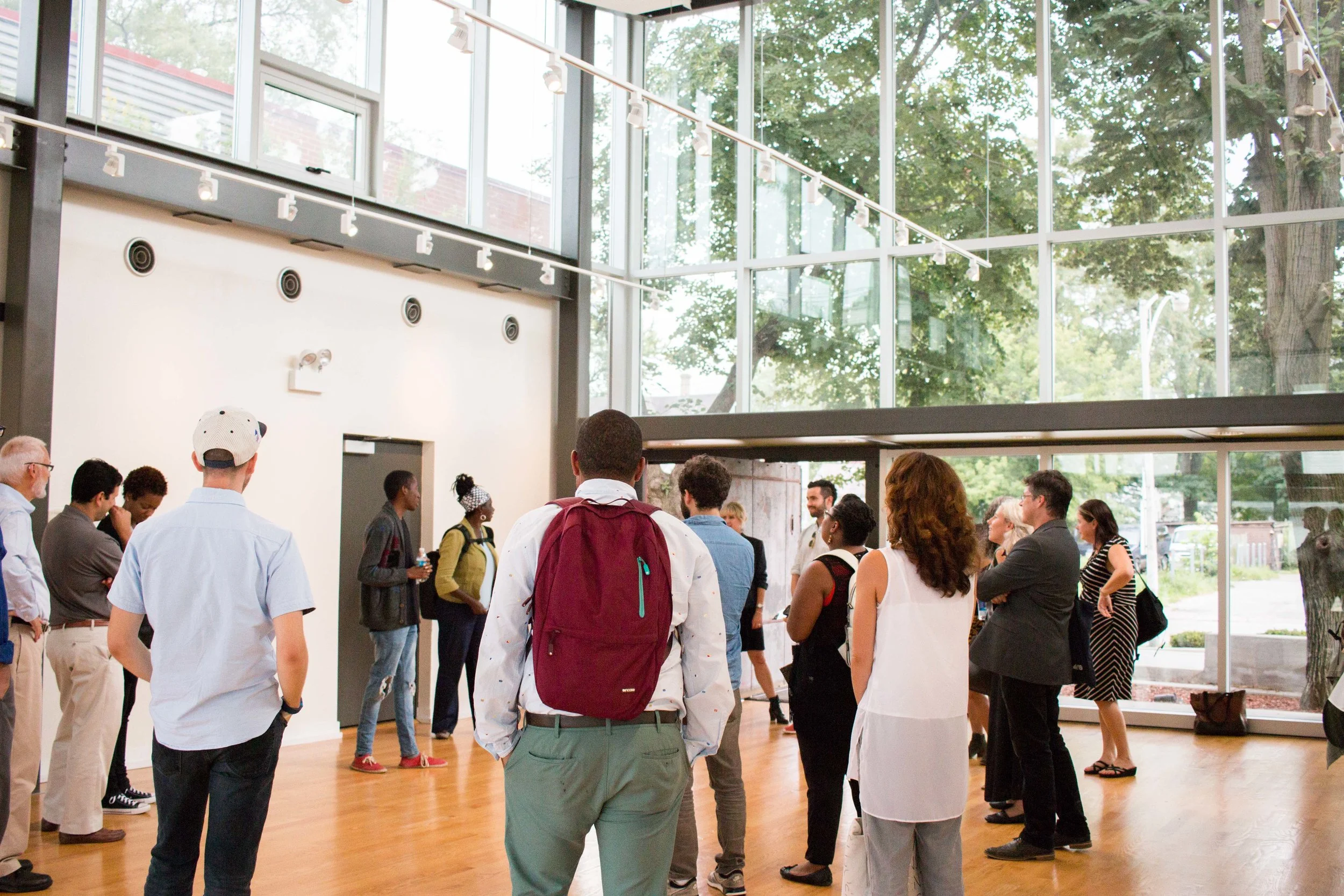
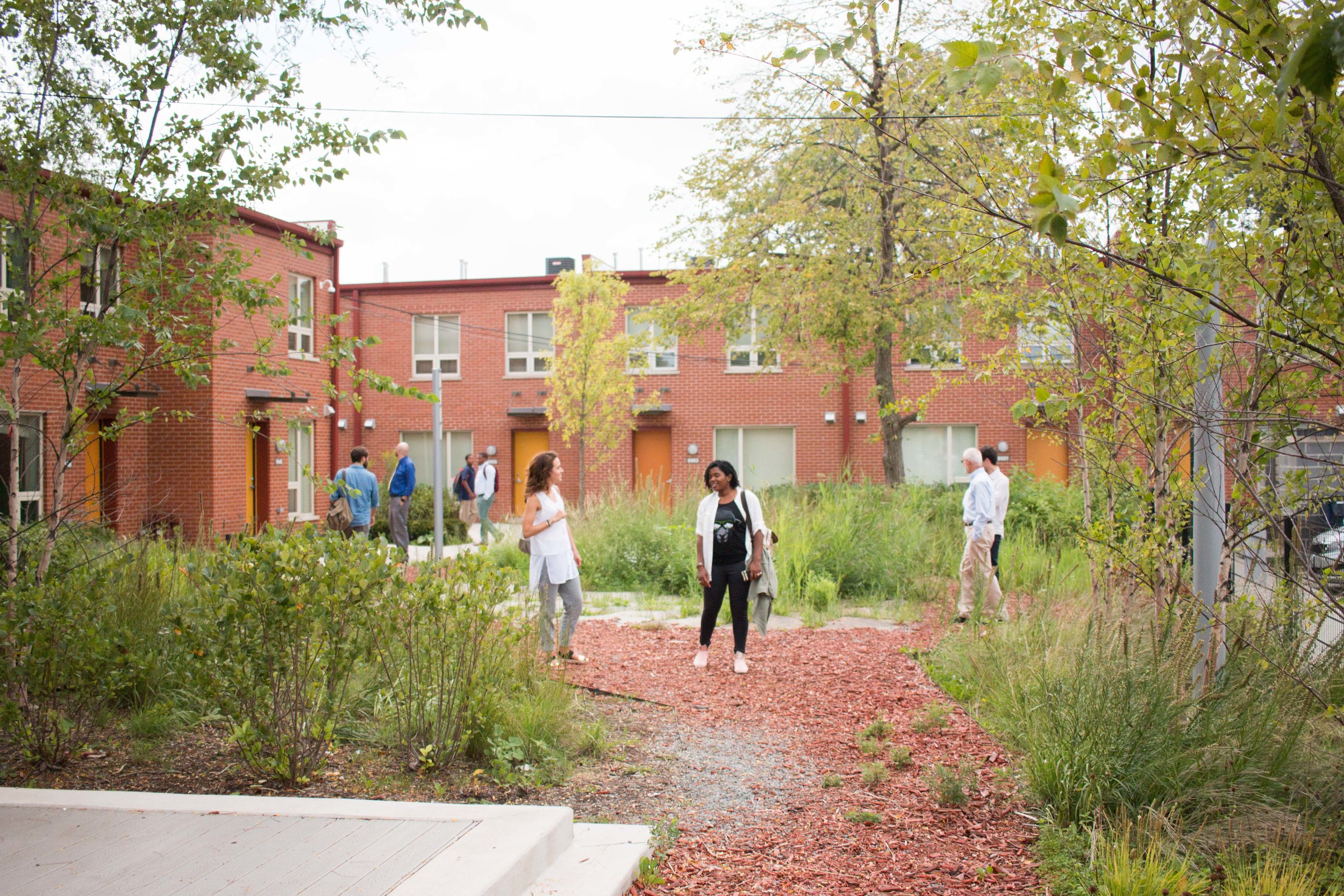

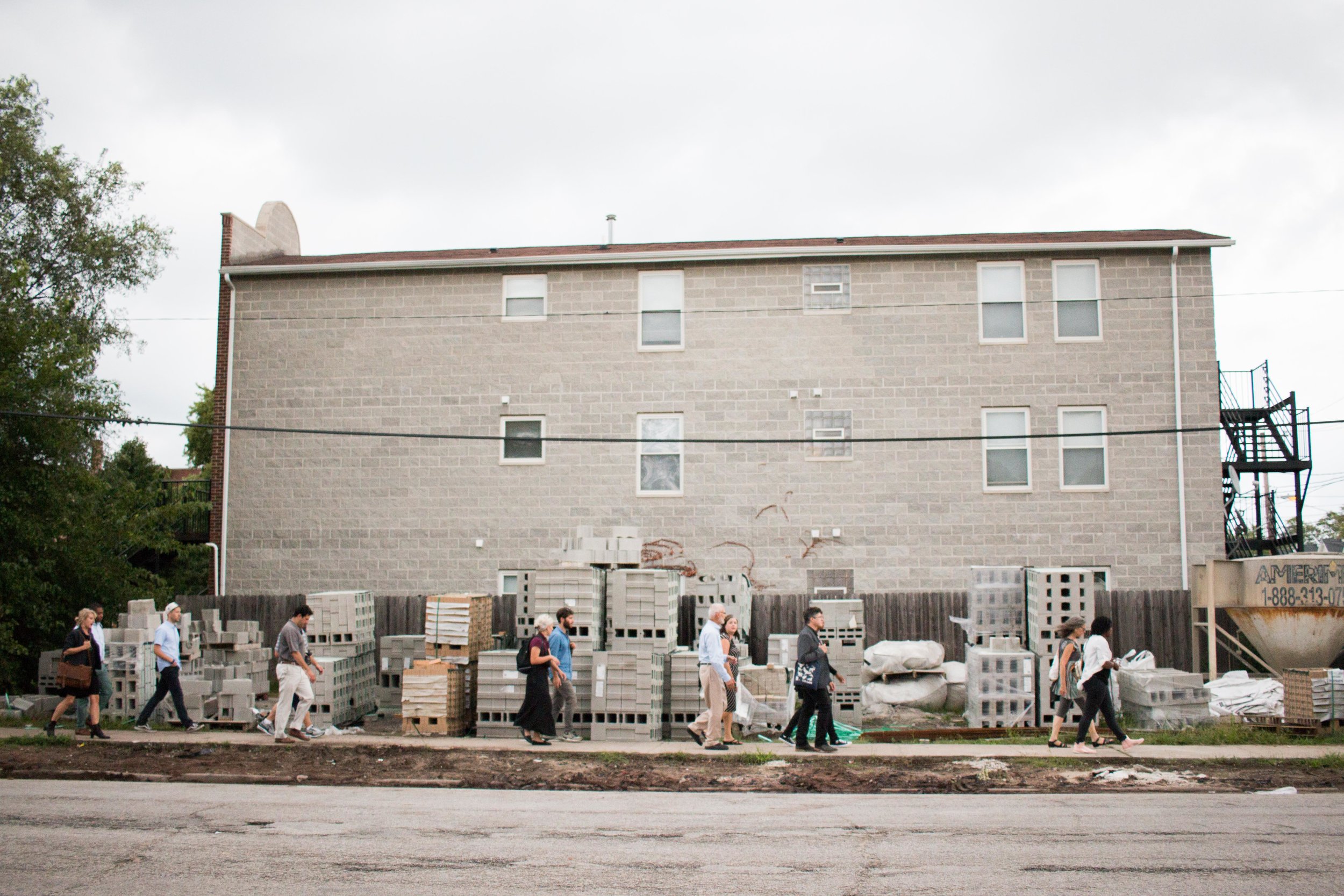
PRELUDE
Before each Session, Place Lab offers opportunities for visiting and local Salon members to explore community and redevelopment projects happening in Chicago as well as projects overseen by Theaster Gates. Both projects correspond to the Principle on which that month's Session is focusing.
For the September Session, which focused on Principle #2: Engaged Participation, members visited the Jane Addams Hull-House Museum as the organization was making preparations to celebrate the social reformer’s 146th birthday. Located on the edge of the University of Illinois Chicago campus, Hull-House is a historical marker of the 19th-century social settlement movement and highlights the significant public policy advocacy work done by Addams, her colleagues, and residents.
Members also toured the Dorchester Art + Housing Collaborative (DA+HC), which is a part of the projects portfolio of Gates’s Rebuild Foundation. As described by Rebuild, DA+HC is “a rehabilitated public housing project that offers an art-centered residential community.” DA+HC consists of a block of 32 townhomes that provide housing for artists and community members, with the intent of fostering dialogue and collaboration between both groups. The DA+HC is mixed-income housing and features an even distribution of artist, public, affordable rate, and market-rate housing.

















PART I
For the second Salon, members dug into the Principle of Engaged Participation, a subject that came up frequently during the first Salon as many practitioners considered its meaning and relationship to their projects, and how best to implement it. To frame our exploration of the meaning of Engaged Participation, Theaster posed a question that became a refrain throughout the Session—“How do we listen?”—using listening as a place to begin.
We listened to the experience that guest expert Camille Odeh shared about her work with the Southwest Youth Collaborative of Chicago (SWYC), the former comprehensive, coordinated system of neighborhood-based youth services. Camille currently teaches in the School of Social Work at Chicago State University, and previously was the executive director of SWYC. In describing how the organization put the Principle of Engaged Participation into practice, Camille said they learned that the community needed to be literally inscribed into its infrastructure.
Various kinds of groups in the neighborhoods were identified—by ethnicity, age, race, geography, etc.—and the organizers made sure these populations were written into the by-laws and represented on the board of directors. Only by this purposeful structure building would SWYC have a chance at reaching community consensus. From this foundation, a wide variety of projects, programs, and partnerships evolved that truly served the residents and the neighborhoods in which they were based.
When asked by co-facilitator Steve Edwards about the challenges of building consensus within SWYC, including differing values and limited resources, Camille said that by establishing a basis of inclusion, everyone had access to existing resources, trust was created, and they could work towards consensus.
“It’s a process of time, it’s a process of transformation, it’s a process of building, and it’s also a process of having a vision, a vision for a future in which the quality of life will be improved for everybody. I mean, that’s what this work is about. So that we can all have a good quality of life so that there can be justice for everybody. That should be the focus of our consensus.”
Keeping in mind Camille’s insightful approach to Engaged Participation, Steve then gave the mic to Demecina Beehn, Outreach and Engagement Manager at Rebuild Foundation, to talk about the DA+HC. Demecina shared DA+HC’s method of embedding artists in the community and its programming, which creates a cultural shift in the neighborhood. DA+HC worked with neighbors early on, discussing access to amenities—like laundry facilities—and general improvement in the quality of living, and giving artists who are qualified applicants preferential treatment.
“When you add an artist to the mix and they show everyone a different world view, it opens their minds. And then they can begin to explore.”
The value of creative programming being built into the reimagining of a neighborhood was echoed by Salon Member Alysia Osborne, who shared what she’s learned as the Director of Charlotte Center City Partners (CCCP) Historic West End initiative. The area is home to the oldest surviving middle-class African-American neighborhood in the North Carolina city. CCCP received an actual invitation by the residents (which Alysia noted isn’t always extended in redevelopment work) to develop economic vitality in the Historic West End.
She talked about her own version of the 9 Principles—with titles like Lose the Cape, Learn the Landscape; Be the Host, Not the Producer; and Party with a Purpose—that are predicated on the pillar of building trust. She’s helped the residents understand more about how to make change in communities, that it “actually starts before you see anything, before you start to see a building, before you start to see grating, anything—it starts with a policy.” As she’s walked residents through the process of interpreting and changing policy, they’ve identified the small-scale events and interventions they could undertake in the interim and have begun to think of a phasic approach to their work.
Alysia encouraged her fellow Salon Members to practice patience and be creative, de-emphasize ego, and focus on the people and the lives they lead in their neighborhoods.









PART II
After Alysia’s presentation, members broke out into small groups to discuss the challenges of engendering trust in city-building and to identify other pillars of the Principle. Certain themes surfaced when everyone reconvened and shared, including awareness of communication methods and learning a neighborhood’s cultural language, identifying the subjects and what their level of agency is, who does or doesn’t have power and how to create equity, what balance to strike between communities’ needs and one person’s vision, the complicated ecosystem of a community, unpacking values and access, and scaling Engaged Participation up and down to even one-on-one interactions at different stages, for various contexts and purposes.
Based on what was discussed, Steve culled a list of pillars of Engaged Participation:
- Build the Structure
- Build Trust
- Collectivize Efforts
- Respect, Inclusivity, Communication
- Shared Values and Process
- Understanding History
- Adaptive Patience
- Listening
Each of these pillars was given an early definition that Place Lab will work to flesh out and share.
Before the session ended, Steve and Theaster teased out an important thought: For those involved in city building, residents and developers alike, Engaged Participation needs to be an ongoing process that begins with the project’s organizational foundations and is managed through construction and beyond with the production of cultural activities for people in the spaces throughout the lifespan of the project. It’s a new definition of development that takes into consideration moments in which power is relinquished or transferred, how the role of gender influences the process (Theaster wondered: “What’s the gender dynamic of women being developers?....Is there some queering that needs to happen in the conventional structures of development that would help us listen better?”), and rethinks the methodology and structure of not only development, but of all the organizations involved in the project.
While the close of the discussion felt like it came too soon, the precepts that were laid out are a beginning framework for engendering deep relationships among the people and organizations working towards dignity and equity as a standard of living in our cities.
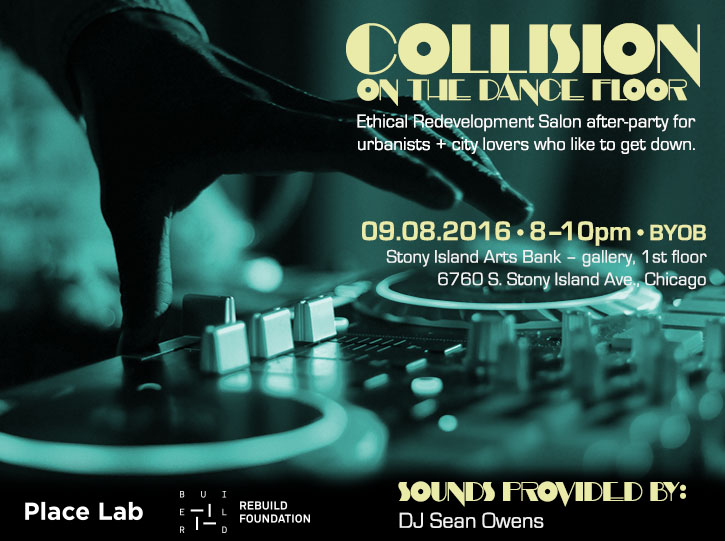












PART III
“The event—what is happening—is beside the point. The point is that folks are meeting, exchanging, and learning. Create intentional hang time. It builds bonds, which build community.”
As discussed in the recap of Session #1, "hang time" is an integral component of each Session. These times provide members with the opportunity to socialize and build their networks and connections alongside enjoyment of a cultural offering.
For Salon Session #2, we co-hosted with Rebuild Foundation an after-party called Collision on the Dance Floor. Following the close of the Session, members joined invited guests in the exhibition hall at the Stony Island Arts Bank to mingle, chat, and dance to the beats of DJ Sean Owens.
Salon Session #3 was held in October. Stay tuned for the recap!
Bring your voice to the conversation. During the session, member James Feagin asked “What does a successful mixed neighborhood look like?” He’s looking for answers because it feels like an elusive, temporary stage that developing neighborhoods pass through on their way from one end of the investment spectrum to another. Share your thoughts and examples on the forum.